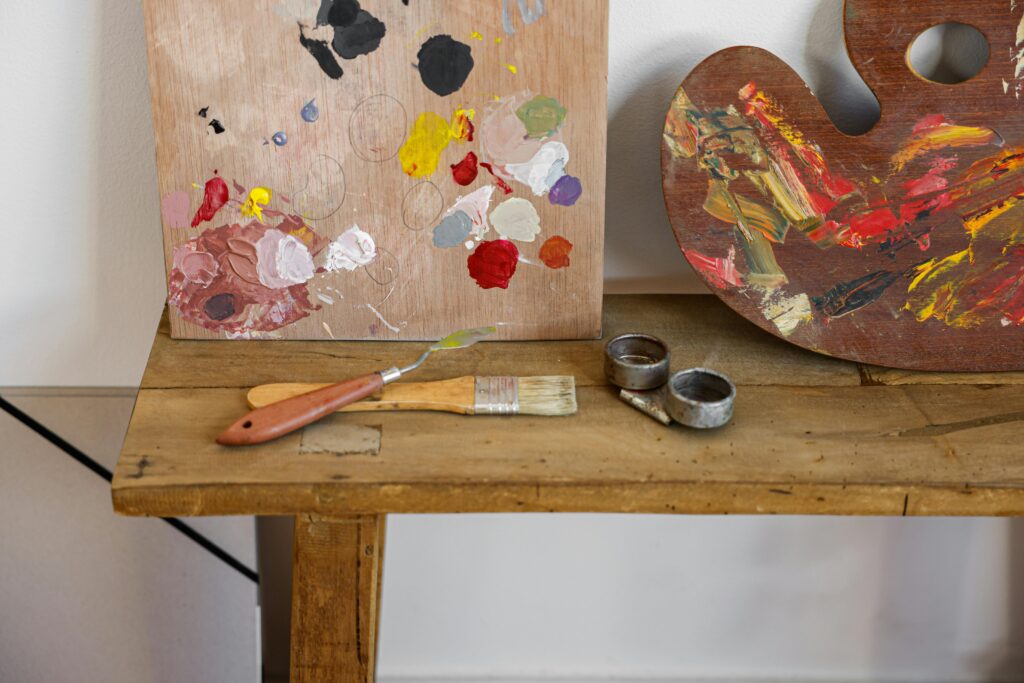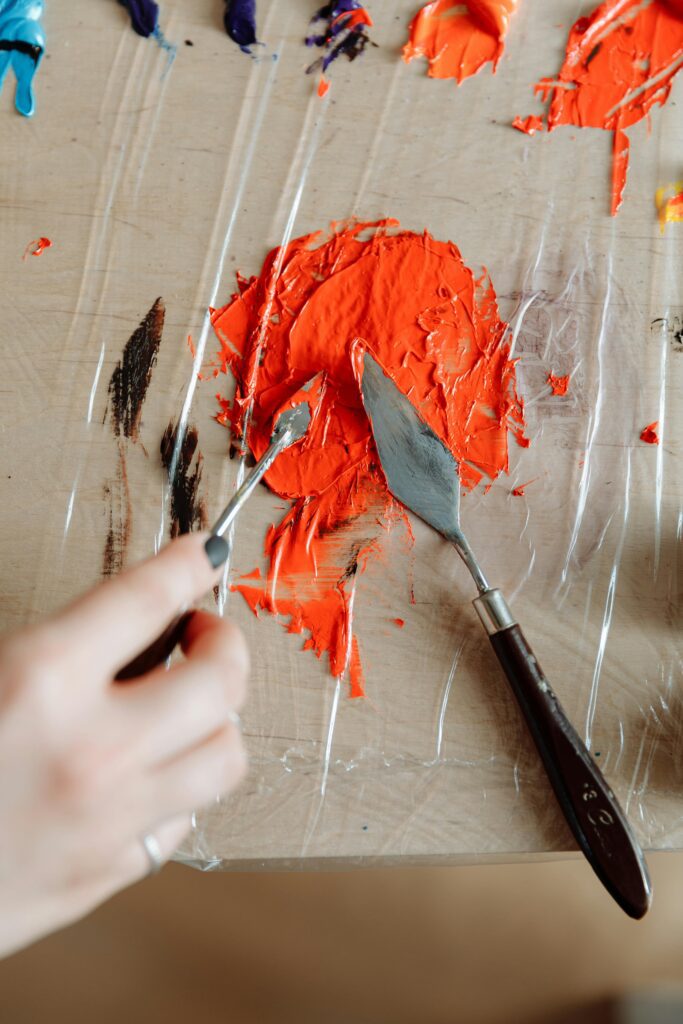How Limited Editions Can Help You Make More Art Sales

Scarcity has always held power. The fewer there are of something, the more people seem to want it. That same principle that drives rare sneakers or collectible coins also applies to art. Limited editions create a sense of urgency and value that open editions rarely can. But behind that allure lies a real balancing act , one that requires an artist to think like both a creator and a strategist.
A limited edition isn’t just about cutting the number of prints. It’s a signal. It tells collectors that what they’re buying carries intention, not abundance. That they’re not just purchasing an image, but entering into a small circle of ownership. The smaller that circle, the higher the emotional and economic value becomes. But that only works when you handle it with care , pricing, documentation, and presentation all matter more than most realize.
What most artists underestimate is how psychological limited editions really are. The difference between an edition of 10 and 100 isn’t just quantity, it’s perception. It changes how buyers experience rarity, how quickly they decide, and how long your work holds its value. Once you understand that, pricing becomes less about guessing and more about crafting a story that feels true to your work’s worth.
There’s also a protective side to all this. When editions are clearly managed, signed, and numbered, they create trust. Collectors know what they’re getting, and that confidence travels. Galleries, curators, and buyers remember artists who are transparent about their editions , and quietly skip those who aren’t. Managing editions well isn’t just professionalism, it’s reputation management in disguise.
Many artists avoid small-run editions because they seem complicated , printing logistics, certificates, tracking, pricing tiers. But in reality, once your system is in place, it simplifies everything. You know exactly what exists, what’s sold, and what’s left. That clarity saves time and supports growth, especially when your collector base starts to expand.
So this isn’t just a pricing conversation. It’s a long-term one. Understanding how limited editions work financially and emotionally lets you create sustainable value for your work. It’s where creative integrity meets business strategy, and where an artist begins to shape not just what they make, but how the world values it.

“Small Runs, Big Impact” Isn’t Just a Saying
There’s a quiet power in limitation. When you release only ten prints instead of a hundred, you’re not shrinking your audience , you’re sharpening it. You’re saying, “This piece has boundaries,” and that instantly makes people pay attention. Collectors lean in closer when something feels rare but intentional, not scarce for the sake of it.
The key is to make your small runs feel deliberate, not like leftovers from a big dream. When every edition feels like a considered choice , signed, numbered, documented , it changes how others perceive your professionalism. Suddenly, you’re not just selling art; you’re creating small-scale investments that people trust.
What happens next is subtle but powerful. Buyers start making faster decisions. They know hesitation might mean missing out. That urgency, when handled ethically, builds consistent sales momentum. It’s not about manipulation, it’s about respect , both for your work and for the people collecting it.
There’s a long-term ripple too. Limited editions age beautifully. A sold-out print becomes part of your story, proof that your work carries staying power. It tells future collectors that when you release something, it matters. That credibility compounds over time, especially as your career grows.
But none of this works without intention. Randomly assigning numbers or offering “limited” editions without clear limits confuses people. Be transparent. Write your edition size, keep records, issue certificates, and treat each piece like it deserves its own legacy.
A small edition done thoughtfully can do more for your reputation than a dozen open ones done casually. It tells the art world you’re not rushing , you’re building. And that patience is what separates artists who last from those who burn out fast.
The Psychology Behind a Number
A small number next to your signature , “1/10” or “3/25” , carries more meaning than most realize. It turns an image into a moment in time. Buyers aren’t just purchasing art, they’re buying position, rarity, and proximity to something finite. That number shifts your piece from decoration to possession.
Humans have always been drawn to scarcity. The fewer there are, the stronger the desire. But in art, the trick isn’t to just make something rare , it’s to make it feel worth being rare. When your edition numbers match your reputation, demand rises naturally. Too large a run and it feels diluted. Too small, and you might undersell your potential. Finding that balance takes observation, not guesswork.
For emerging artists, smaller editions , say 10 or 20 prints , can create a sense of collectibility early on. It’s easier to sell ten pieces at a fair price than fifty at a stretch. As your career grows, you can expand your edition sizes to match the increasing demand. It’s a living strategy, not a fixed rule.
The emotional side matters too. Some collectors want to own “number one” simply because it feels special. Others prefer the last print, believing it closes the series. When you understand these preferences, you can shape your marketing and pricing with confidence, not confusion.
Transparency makes all the difference. Always note edition size on your website and certificates, and avoid quietly expanding runs later. Once an edition is closed, keep it closed. That trust is what turns one-time buyers into lifelong supporters.
A number is just ink on paper , until it represents trust. Then it becomes the foundation for a collector relationship that keeps growing with every new release.
Pricing Small Runs Without Guessing
Pricing limited editions feels like walking a tightrope. Price too low, and you undervalue the rarity. Price too high, and you freeze potential buyers. The goal is to find a middle path that honors the scarcity while keeping the work accessible enough to move.
Start with your open edition or original price as a reference. If your open prints sell for $100, a limited edition of ten might start at $250 or $300, depending on print quality and demand. The smaller the edition, the higher the individual price can climb , but only if the perceived value justifies it.
Collectors aren’t just paying for paper and ink; they’re paying for confidence. When they buy a limited edition, they expect that price to hold or grow over time. You can support that by maintaining consistency , never discounting sold editions, and communicating clearly when one is nearly gone. That helps sustain value across your entire portfolio.
There’s also a strategy many artists overlook: tiered pricing. Start the first few prints at one price and increase gradually as the edition sells out. It rewards early buyers and reflects growing demand. Each sale subtly signals the work’s rising worth.
Be careful not to rely on hype. Real value builds through clarity and follow-through. Explain what makes your editions special , the paper, the printing method, the archival quality, or even the story behind the series. These tangible details justify your pricing better than abstract claims.
When you price with structure instead of emotion, collectors sense that professionalism. It’s what makes them return, because they know your art isn’t just beautiful , it’s dependable.

Certificates Aren’t Bureaucracy, They’re Trust Builders
Some artists treat certificates of authenticity as paperwork. In reality, they’re part of your art’s identity. A well-made certificate transforms a print into a collectible. It confirms that what someone owns is genuine, limited, and part of something larger than a single transaction.
A proper certificate includes your name, artwork title, edition size, print number, date, signature, and medium details. It’s the physical handshake between you and your collector , a written promise that what they’ve bought has integrity. Without it, even the best print can lose long-term credibility.
Collectors keep these certificates for years, sometimes decades. They’re not just proof of purchase, they’re emotional keepsakes. When your collector passes it along or resells the piece, that paper travels too , carrying your name into rooms and markets you might never see.
This simple document can also help protect you. It creates a verifiable record of your editions, which helps if disputes ever arise or if your work enters secondary markets. You can track each print confidently, knowing you’ve set clear terms from the start.
Don’t be afraid to make it feel personal. Add a short note about the piece or your process. It makes the collector feel part of your world , and gives the certificate a touch of heart rather than cold formality.
One thoughtful certificate can do more for your reputation than any sales pitch. It’s how trust gets built quietly, one signature at a time.
The Edition Tracker Every Artist Should Keep
Once you start offering limited editions, record-keeping becomes as essential as creativity. Knowing what’s sold, what’s available, and who bought which print isn’t just admin , it’s part of protecting your value. A good tracker keeps your editions organized, transparent, and easy to reference at any stage.
Whether it’s a spreadsheet or a Trello board, track every detail: artwork title, edition size, print numbers, buyer names, and sale dates. Over time, this log becomes a map of your collector relationships. You’ll see patterns in who supports your work and which series attract the most attention.
This habit saves you from confusion later. Imagine being asked for “number 5 of 10” years after release, and you can pull it up instantly. That kind of clarity reassures both you and your collectors that your editions are truly limited and professionally managed.
It also helps with pricing future work. Seeing which editions sold fastest, and at what price, gives you hard data. Instead of guessing next time, you can base your pricing on performance, not pressure. That kind of structure helps you scale confidently as your reputation grows.
An edition tracker can also double as a legacy tool. If your work enters archives, galleries, or estates, having records ready ensures your catalog is accurate and respected. It’s the kind of long-term professionalism that serious collectors and curators quietly notice.
Think of it as part of your art practice , not a chore, but a system that protects the story of your work long after it leaves your hands.

Why Scarcity Works Better Than Any Marketing Trick
There’s something magnetic about knowing there’s “only a few left.” It’s the same reason people line up for exclusive sneaker drops or limited vinyl releases. When your art is part of a small edition, it carries a built-in sense of urgency. Collectors don’t just buy because they love it, they buy because they might not get another chance. That gentle tension between desire and availability creates energy around your work.
Scarcity also signals value. When something can’t be easily replicated, it feels more important. Think about it, you’d treat an original painting differently than a poster print, right? The same psychology applies to limited editions. Even a print becomes an “art object” when it’s numbered, signed, and intentionally finite.
But scarcity alone isn’t enough. It only works when the art and story feel authentic. If you’re making something limited, it should feel like there’s a reason for that choice, not just a sales gimmick. Maybe the process was slow, or the materials were rare, or you simply wanted to keep the edition special. People sense when a limit is meaningful.
To make it work, be transparent. Tell your buyers why you’re only offering ten or twenty prints. Let them peek behind the curtain. When they understand your process, that number suddenly feels sacred.
And don’t forget to remind them what happens when it’s gone. Scarcity thrives on clarity. Once the last piece sells, archive it visibly on your website. That moment when people see “Sold Out” next to an image they love is powerful, it makes them pay attention next time.
Limited editions aren’t just about money, they’re about trust. When you follow through on your word, collectors remember. That’s what turns a single sale into a lifelong supporter.
Stop Guessing Your Edition Sizes
Artists often pull edition numbers out of thin air. Ten sounds too small, fifty sounds too big, so they land on twenty-five because it “feels right.” But edition size shouldn’t be random, it should be strategic. The right number depends on your audience, your medium, and your goals.
If you’re just starting to sell prints, smaller is usually smarter. It lets you test the waters, keep things exclusive, and build demand. Ten to fifteen prints can sell out faster, which boosts momentum. Once you’ve built a collector base, you can expand future editions with confidence.
For digital or photography-based work, you might go slightly larger, since those formats are more reproducible. Just make sure you can manage fulfillment without losing quality control. Each print should look identical, and each buyer should feel like they’re getting something truly premium.
Price also plays a role. Smaller editions can justify higher prices, while larger runs usually rely on volume. The key is to find the sweet spot where your work feels accessible but still precious.
And once you’ve decided on a number, stick to it. Never reprint or “add more later.” That single move can damage your credibility faster than anything else. Limited means limited, period.
When you’re selling limited editions, presentation can make or break the perceived value of your work. That’s where the Customizable Digital Portfolio Template for Artists from the Arts to Hearts Shop comes in handy. It helps you pull your best pieces, edition details, and artist story together into a clean, professional format that feels gallery-ready. You can update it anytime, add images, adjust layouts, and send it directly to collectors or curators with confidence. It’s the kind of simple tool that quietly raises your entire game without needing a designer’s touch.
Signing, Numbering, and Certificates: The Little Details That Matter
These small acts, signing, numbering, certifying, might feel bureaucratic, but they’re the rituals that turn your art into an investment. A print without a signature feels incomplete. A print without numbering feels mass-produced. Together, they add gravitas.
Always sign in pencil or archival ink directly on the print border or the back if needed. Hand-signing makes every piece feel personal. It’s proof of touch, something that connects you to every collector even if you’ll never meet.
Next, numbering. “3/25” isn’t just math, it’s a promise. It tells buyers exactly where their piece stands in the story of that edition. It’s also what protects your integrity as an artist. Collectors love clarity, and numbering provides it.
Certificates of authenticity (COAs) are the cherry on top. They document your edition details, title, size, date, medium, and total edition number, and should be printed on premium paper. A COA gives collectors peace of mind and makes resale or provenance tracking smoother.
Keep digital records too. Maintain a spreadsheet of all edition sales, numbers, and buyer details. It’ll save you headaches later, especially if you get featured in a show or secondary market interest grows.
This isn’t busywork, it’s reputation work. Every signature and certificate says: “This is real. This is mine. This is limited.”

Pricing Limited Editions Without Undervaluing Yourself
Pricing limited editions can feel like walking a tightrope. Too high, and you risk scaring off buyers. Too low, and you undercut your own value. The trick is to base it on more than instinct, there’s logic to it.
Start with your original work’s price. Limited prints should usually fall between 10% and 30% of your original’s value, depending on the edition size. Smaller runs sit at the higher end of that range, larger ones lower.
Consider your production costs too. Include printing, packaging, shipping, and your time. Then, build in a profit margin that makes the effort worthwhile. This isn’t just about selling art, it’s about sustaining your practice.
As pieces from your edition sell, your price can increase slightly. Collectors expect that. The last few prints should be the most expensive because scarcity is now real. Make that progression visible, it rewards early buyers and builds urgency for later ones.
Also, never price randomly across editions of similar quality. Consistency builds trust. If one print is $200 and another similar one is $600, you’ll confuse buyers. The story behind your pricing should be clear, logical, and fair.
And always remember: limited doesn’t mean “discounted.” It means “exclusive.” Your pricing should reflect that energy.
Keeping Resale Fair: Protecting Long-Term Value
Once your work sells out, it’s not just yours anymore, it becomes part of a collector’s portfolio. That means resale will eventually happen, and you can shape how it unfolds. Protecting your long-term value is part of being a professional.
Start by educating collectors. Include clear guidelines in your COA about resale expectations, mention that prices should ideally not undercut your current retail rate. Most collectors will respect that if it’s framed professionally.
You can also use artist resale rights platforms or contracts to ensure you get a small royalty if a work is resold. It’s common in Europe and gaining traction globally. Even a small percentage helps sustain your practice and recognizes your ongoing authorship.
Keep track of where your editions end up. Knowing who owns what helps if a gallery or curator ever asks for your full catalogue. It also gives you insight into who’s investing in your work long-term.
And when collectors do resell, celebrate it publicly. Share it on your stories or newsletter. It shows your market has movement, which signals growth to future buyers.
Managing resale isn’t about control, it’s about stewardship. You’re not just making art, you’re building an ecosystem around it.
